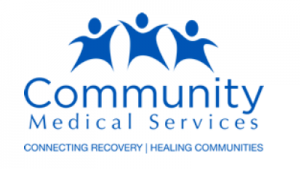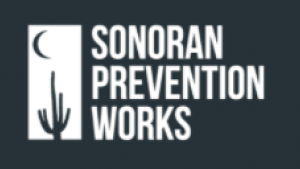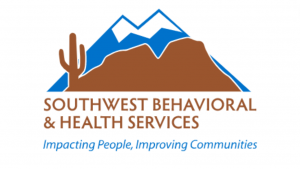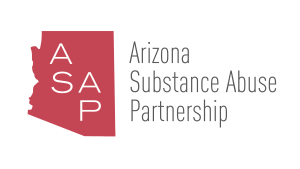Funded Projects
Spring 2023
Mindfulness-Based Ecological Momentary Intervention for Co-Occurring Opioid Use Disorder and Chronic Pain
PIs: Chung Jung Mun, Ph.D. (Arizona State University), Corey Roos, Ph.D. (Yale University), and Nick Stavros (Community Medical Services)
Summary: There is a paucity of interventions for co-occurring opioid use disorder and chronic pain. Difficulty with emotion regulation is a key shared vulnerability factor underlying both conditions. Mindfulness-Based Interventions (MBIs) are a promising intervention approach, as they target core skills that can improve emotion regulation. However, research on MBIs for co-morbid opioid use disorder and chronic pain is limited. Existing MBIs are also limited by not providing adequate support “in the moment” when individuals are in high-risk situations. A responsive, momentary MBI for co-occurring opioid use disorder and chronic pain may be highly promising, but has yet to be established. In the present study, we will be developing a beta-version of a smartphone app-based ecological momentary intervention, called Mindful Journey, for individuals with opioid use disorder and chronic pain. We will also evaluate the feasibility and acceptability of Mindful Journey via a pilot feasibility trial. The core feature of the app is training in mindful acceptance and savoring skills via momentary “just-in-time” delivery of brief video-based exercises when individuals report elevations in challenging emotional states and/or decreases in positive affect based upon ecological momentary assessments. We will use a community-based participatory research framework in which we will incorporate the input of individuals with lived experience, clinicians, and community organizations during the app development process. The proposed study will establish feasibility for a randomized-controlled trial proposal that will be submitted to NIH.
Spring 2022
A Syndemic Approach to Substance-Use and Concurrent Risks Among Socio-economically Vulnerable Persons in Arizona
PIs: Tina Jiwatram-Negron, Ph.D. (ASU); Julia Matthies (St. Vincent de Paul)
Summary: People living in poverty experience disproportionately high rates of substance use and misuse and financial and insurance concerns often preclude individuals from seeking and accessing treatment. This project will advance our understanding of the role of food insecurity in substance use alongside other frequently co-occurring risks such as trauma/violence and adverse mental health; identify existing service needs and gaps; and explore the feasibility and acceptability of substance use training and services in a non-traditional setting – specifically, an organization providing food and other resources for low-income, food insecure, and/or homeless individuals. Findings will contribute to both, an advanced understanding of substance use risks among low-income vulnerable individuals and provide evidence for the development of a low threshold intervention in a non-traditional substance use treatment setting.
_______________________________________________________________________________________
Identifying Intervention Targets to Reduce Disproportionality and Disparate Substance Use Outcomes Among Homeless Young Adults: A Social Determinants of Health Perspective
PIs: Shiyou Wu, Ph.D. (ASU); Pastor Sarah Stadler (Grace Lutheran Church); Robert Fauer, Ph.D. (Street Medicine Phoenix); Michele Kane (Solution of Sobriety); Pamela Morrison (Phoenix Rescue Mission)
Summary: Homeless young adults (HYAs; 18-34 years old) become a growing problem that causes negative effects on social, economic, and public health in the United States.The first step in developing effective prevention and treatment to HYAs is to understand, identify and prioritize their needs. They are exposed to a range of dangers, including risk of victimization once homeless. Compared to the general population of housed HYAs experience higher levels of physical and mental health problems as well as higher rates of sexual abuse, substance use, drug-related crimes, and risky sexual behavior. The causes of HYAs are complex and varied. For example, disabilities, mental illness, addiction, job loss, poverty, family conflict, and histories of physical and sexual abuse are the common reasons for homelessness. However, research on this vulnerable population remains limited, especially with respect to intervention research to address the complex problems and issues that HYAs encounter. The overall objective of this study is to remedy historically lacking needs assessments and reduce the disproportionality and disparities in substance use treatment (SUT) for HYAs. This study also aims to identify and prioritize unique characteristics and needs. Using the social determinants of health (SDoH) framework, we will also explore an array of factors at the individual, interpersonal/community, and institutional or societal levels, to yield a better understanding of the complex and diverse causes of substance use disorders (SUDs) and SUT among HYAs. Findings from the proposed research will help inform effective prevention and treatment services and better identify the intervention targets for HYAs, which in turn reduce the SUDs and SUT disparities in this demographic.
_______________________________________________________________________________________
Spring 2021
Effect of Initial Dosing on Medication Assisted Treatment Outcomes for Opioid Use Disorder
PIs: William Corbin, Ph.D. (ASU); Nick Stavros (Community Medical Services)
Summary: Opioid poisoning is now the leading cause of accidental death for Americans under the age of 50. The current study seeks to further improve what is already considered the most effective treatment for OUD; Medication Assisted Treatment (MAT). The problem is that rates of drop-out are high, with up to half of individuals leaving treatment within the first 90 days (Timko et al., 2015). The current study seeks to determine if more aggressive (higher initial dose) and consistent (taken regularly at a similar time each day) dosing helps keep patients inMAT and stabilizes their condition. Although there is some evidence to support this idea, it is not clear if dosing has a causal influence on outcome or if patients who are already most likely to be successful going into treatment receive higher doses, and more regularly go to clinic to receive their medication. We will analyze secondary data from 25,000 patients seeking treatment for OUD at over 40 treatment clinics across the U.S. (23 of which are in Arizona). We will examine aggressiveness of the initial dose and consistency of dosing during the first 30 days of treatment as predictors of 60-and 90-day outcomes. Importantly, we will control for a variety of patient characteristics that might influence initial dosing. We will also conduct analyses comparing clinics with blocked dosing (e.g., patients are required to attend within the same time-block each day) to those without. Collectively, these analyses will allow us to make stronger conclusions about the causal influence of initial dosing strategies on treatment outcomes. Results will have important implications for policies within opioid treatment clinics across the country, and could lead to improved treatment outcomes and reduced rates of opioid overdoses.
__________________________________________________________________________________________
Non - pharmaceutical fentanyl use and opportunities for intervention through the expansion of drug checking services
PIs: Raminta Daniulaityte, Ph.D. (ASU); Haley Coles (Sonoran Prevention Works)
Summary: This study seeks to develop innovative ways to address the opioid-related overdose crisis, which continues to accelerate due to increased availability of novel synthetic opioids (NSOs; e.g., non-pharmaceutical fentanyl, carfentanil). People who use drugs are not always fully aware of what’s in them; some may actively seek doses containing NSOs, whereas others do not realize they are present. The study will conduct qualitative interviews with overdose prevention coordinators and individuals who use illicit drugs, asking what users believe is in their drugs, what risks they believe to be present and precautions they take to minimize risk; and how drug-checking can be incorporated into existing services and interventions to reduce opioid-related overdoses. Urine toxicology analysis will be used to compare reported NSO use with the actual contents of used drugs. The study will characterize overdose risk behaviors and environments to identify opportunities for intervention through the expansion of drug checking services.
__________________________________________________________________________________________
Development of an Optimized Approach to Prevent Substance Use among Children of Incarcerated Parents
PIs: Liza Hita, Ph.D. (ASU); Helena Valenzuela (Arizona Department of Corrections)
Summary: The US has seen a dramatic increase in incarceration rates over the past four decades, concordantly increasing the number of children with an incarcerated parent (CIP). Parental incarceration is a well-established source of stress for children, placing them at long-term risk for a range of negative outcomes, including substance use, as well as increased material hardship and psychological strain on those who care for the CIP during the incarceration (CIP caregivers). This project is the first step in creating an intervention program designed to support CIP caregivers, with an ultimate goal of promoting the health and well-being of CIPs and protecting them from negative outcomes. In this first phase, we will create a community-based Steering Committee to guide the adaptation of an existing parenting intervention for this population. We will also conduct focus groups with CIP caregivers to ensure that the adapted program meets their needs. This research will provide preliminary data for a future grant proposal supporting full-scale intervention evaluation.
__________________________________________________________________________________________
Assessing Disparities in Medications for Opioid Use Disorder in Arizona using a Geographic Information System
PIs: Matthew Martin (ASU); Deborah Woodard, LCSW, LISAC (Southwest Behavioral & Health Services)
Summary: The opioid epidemic in the United States is characterized by overuse or misuse of addictive opioid drugs, like oxycodone or heroin, with significant consequences, including overdose. Medication for opioid use disorder (MOUD) is effective treatment, but many individuals cannot access MOUD because services are not available in their area, or they do not know where to go. The purpose of this project is to create a map that patients, clinicians, researchers, and policy makers can use to see what MOUD services are available across Arizona; and to identify locations where individuals are at high risk for opioid use disorder, but MOUD services are insufficient or lacking. The success of this project will help us better understand the risk of opioid use in Arizona, and identify new locations for offering MOUD treatment.
__________________________________________________________________________________________
Developing and Integrating Data Sources to Monitor the Effects of Cannabis Legalization in Arizona
PIs: Madeline Meier, Ph.D. (ASU); Sheila Polk (Arizona Substance Abuse Partnership)
Summary: Adult recreational cannabis legalization could have adverse public health consequences, including rising rates of cannabis use and cannabis use disorder, alcohol and other drug use, and mental health problems. However, findings on the public health impact of cannabis legalization are mixed. One reason might be that the impact of cannabis legalization depends on the development of the legal cannabis market, including the number and location of cannabis dispensaries, types and potency of products sold, and cannabis prices. This project proposes to systematically and rigorously characterize the medical and recreational cannabis market inArizona, and pair these data with localized information on public health outcomes. Outcomes will include electronic health record data on emergency department visits and hospitalizations for cannabis, alcohol, and other drugs from before to after adult recreational cannabis legalization. Analyses will map changes in the AZ cannabis market, explore characteristics of the cannabis market in different AZ localities, as well as explore associations between changes in the cannabis market and changes in public health outcomes at the state and local level. Findings will provide critical preliminary information to state policy makers and to community substance use prevention and treatment organizations who seek to understand and mitigate the adverse public health impact of cannabis legalization.















